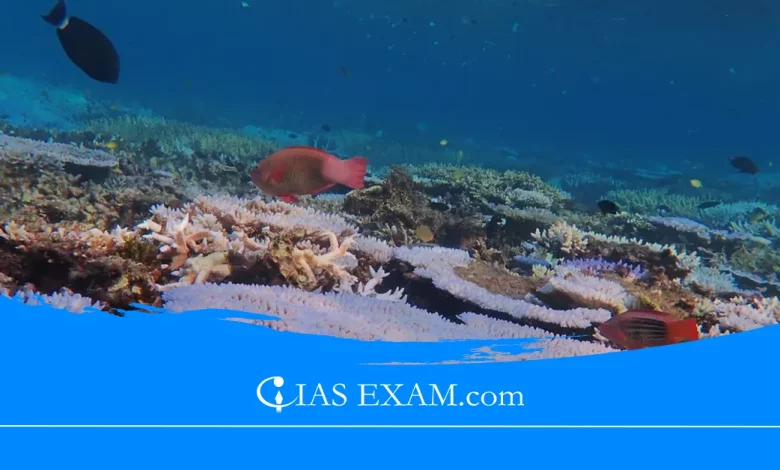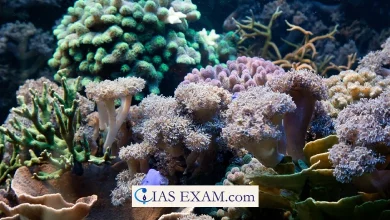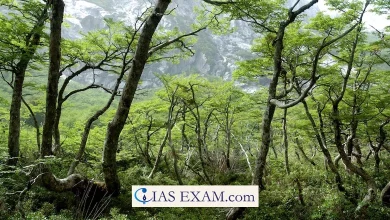Daily Current Affairs for UPSC
5th Mass Bleaching event hit Great Barrier Reef
Syllabus - Ecology [GS Paper-3]

Context
Recently, the 5th Mass Bleaching event hit Australia’s Great Barrier Reef in the last eight years.
Coral Reef
- It is an underwater environment characterised by reef-constructing corals.
- Reefs are fashioned of colonies of coral polyps held together by calcium carbonate.
- The coral polyps stay in an endosymbiotic relationship with algae.
- Temperature: 20°C- 35°C; Salinity: Between 27% to 40%.
- Shallow Water: Coral reefs develop better in shallow water; much less than 50 m.
- Great Barrier Reef: Located in the Coral Sea, Australia (World Heritage Site).
- Coral reefs in India: Gulf of Kutch, Gulf of Mannar, Andaman & Nicobar, Lakshadweep Island and Malvan.
Benefits
- Provide a vital atmosphere for underwater life (Marine Ecosystem).
- Contribution to Blue Economy and employment.
- Coral reef systems generate $2.7 trillion in annual monetary cost through goods and service trade and tourism.
- Basis of Food Chain.
- Guard against incoming storms & Carbon sequestration.
- Medicinal Properties.
Impacts
- Impact on natural world: Coral reefs guide some of the most biodiverse ecosystems on the planet:
- Coral reefs are critical ecosystems supporting numerous marine life, consisting of sea turtles, fish, crabs, and greater.
- They provide shelter, breeding grounds, and safety, crucial for many species’ survival. Reef collapse threatens this biodiversity, risking extinction for at-risk species.
- Impact on Humans: It threatens livelihoods, food security, and protection.
- Reefs act as natural barriers, protecting coastal communities from waves and storm surges. Without them, costly and less effective seawalls become necessary, harming the environment.
- Bleaching exacerbates overfishing by disrupting the food web and depriving species of vital habitats for spawning. This impacts those reliant on marine resources for income and sustenance.
- Reef tourism is a multi-billion-dollar industry that faces jeopardy as bleached reefs deter visitors and impact local economies and jobs.
What is Coral Bleaching?
- When corals are burdened by changes in conditions such as temperature, light or nutrients, they expel the algae living in their tissue, causing them to turn white, hence bleached.
- However, Corals can survive a bleaching event, but they are under more stress and are subject to mortality.
Factors Causing Mass Bleaching
- Climate change brought about warming, El-nino activities, less oceanic tides and currents, anthropogenic activities like fishing, pollutants and coastal degradation.
- Causes: Change in ocean temperature due to climate change, run-off and pollution storm, overexposure to sunlight, extreme low tides causes coral bleaching.
Way Ahead
- Limit global average temperature well below 2°C above pre-industrial levels.
- Collaborative efforts are needed to address overfishing & marine pollution.
- Steps must be taken in direction of Climate resiliency (Paris settlement, SDG 8 & 12)
- R & D should be done for heat resistant corals.
Source: The DTE
UPSC Mains Practice Question
Q.Assess the impact of global warming on the coral life system with examples. (2019)





.png)



